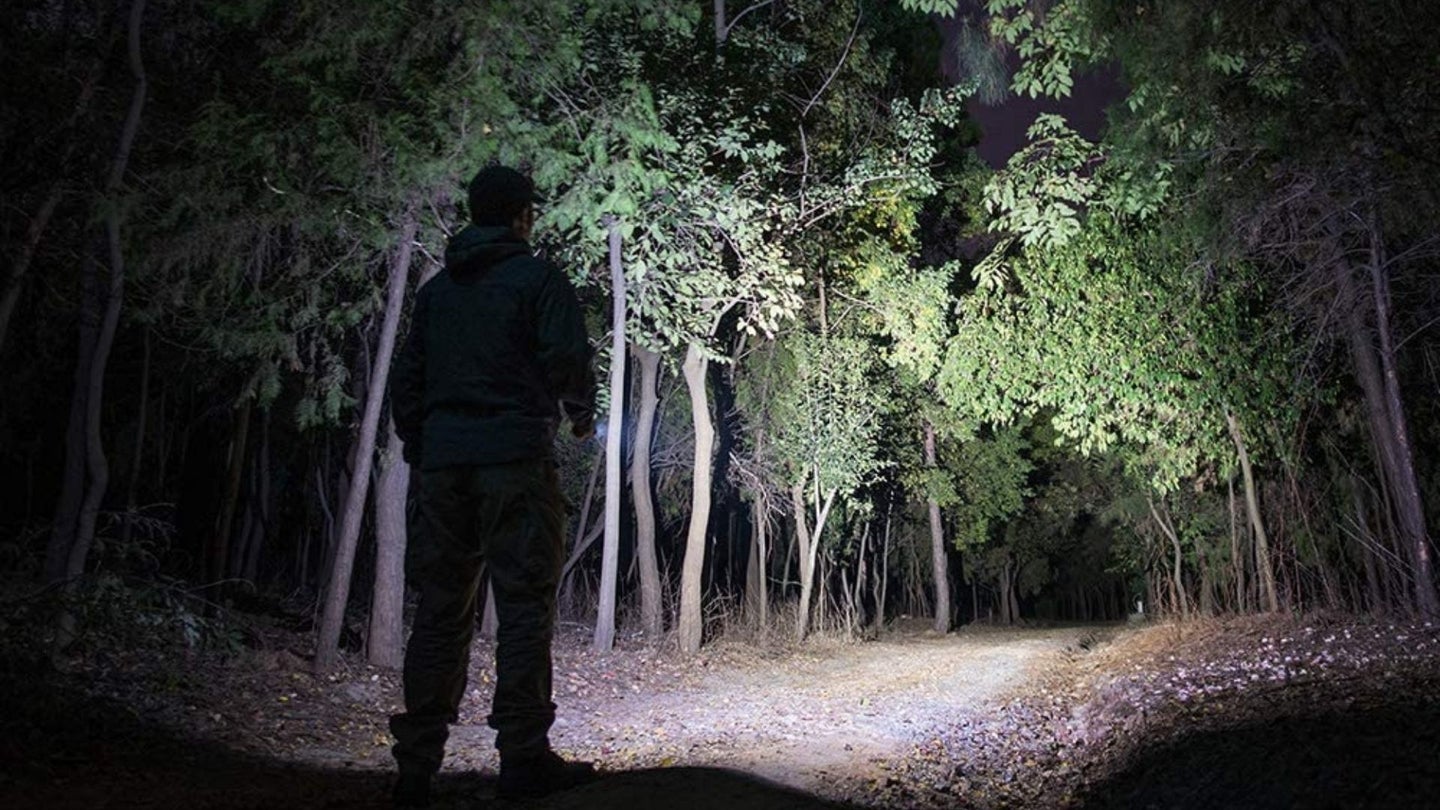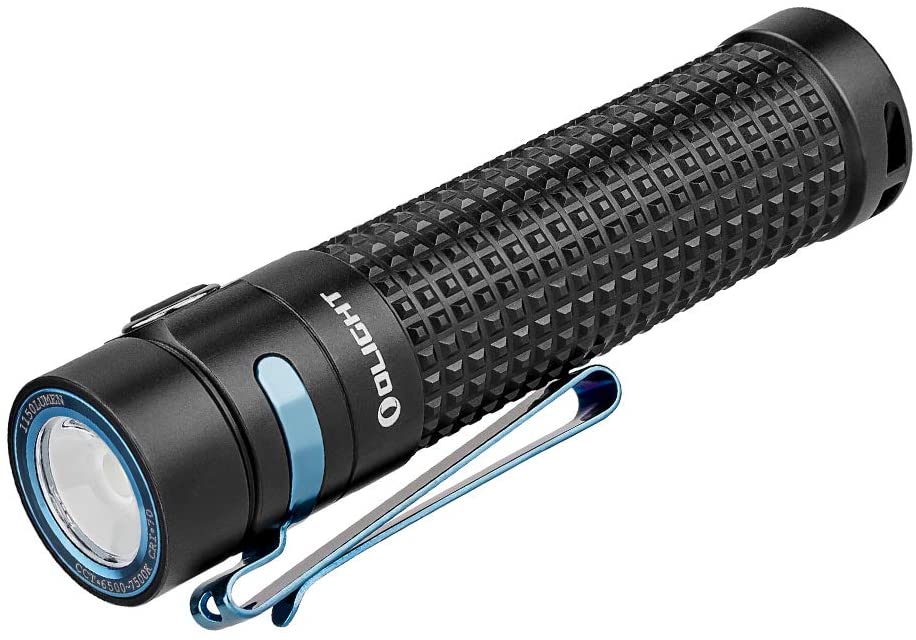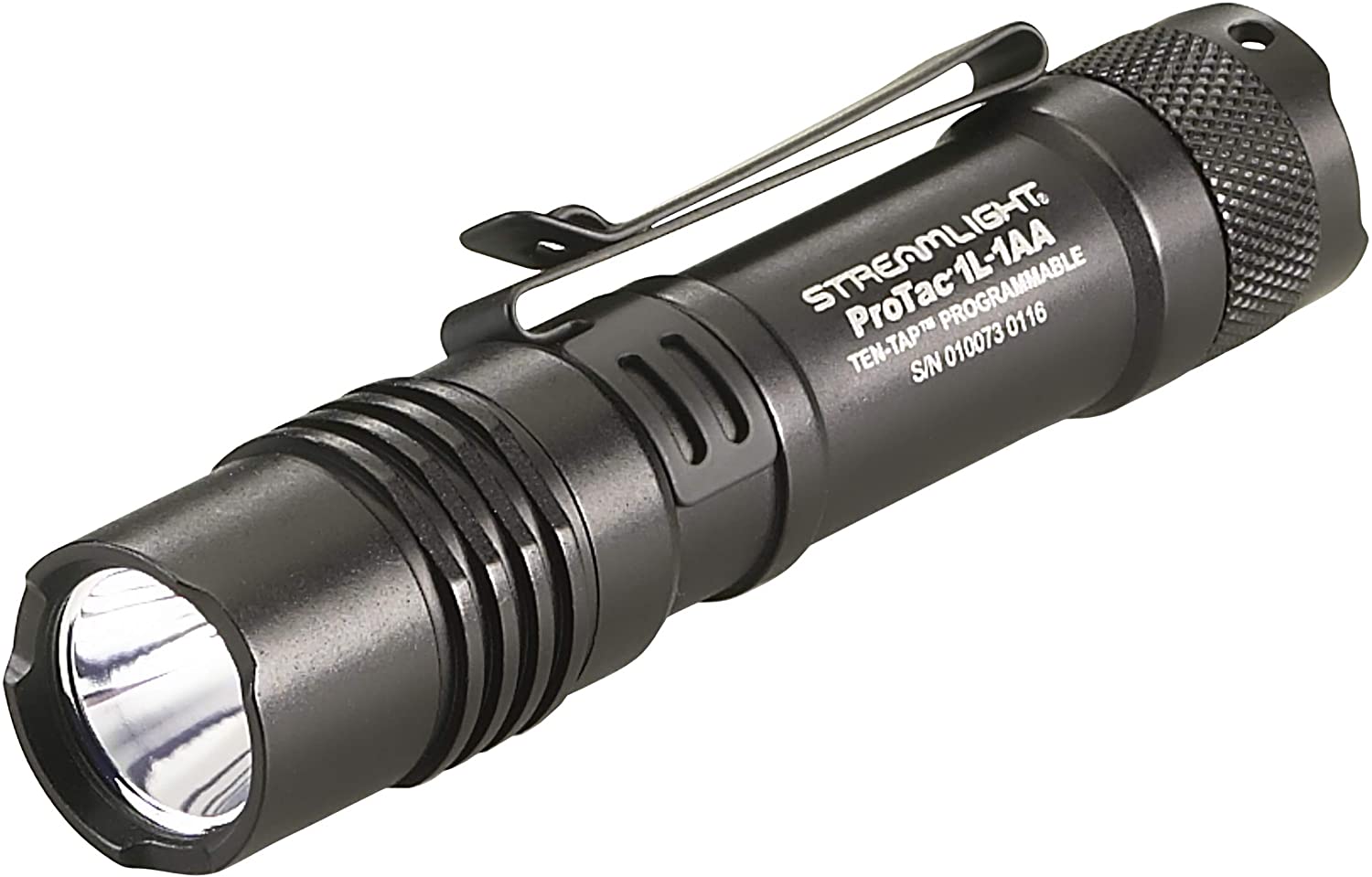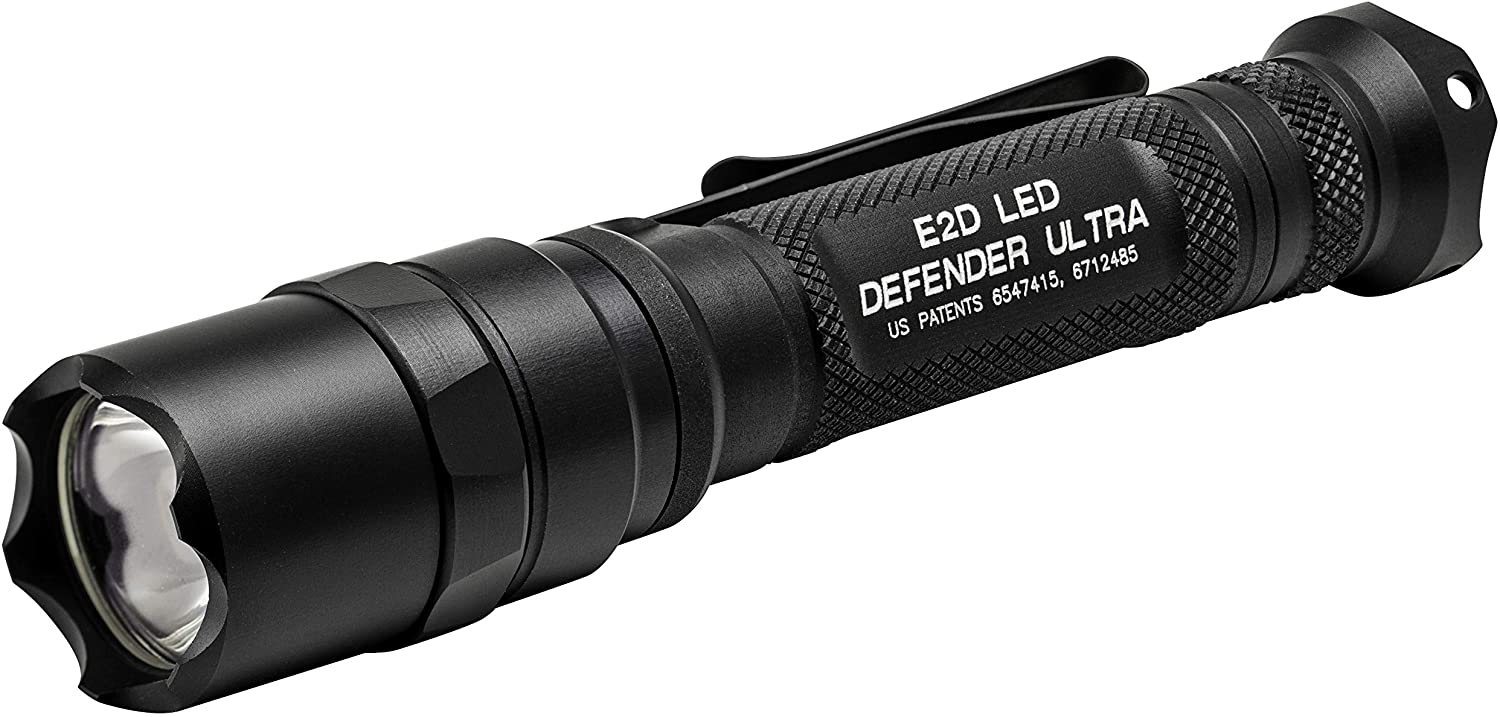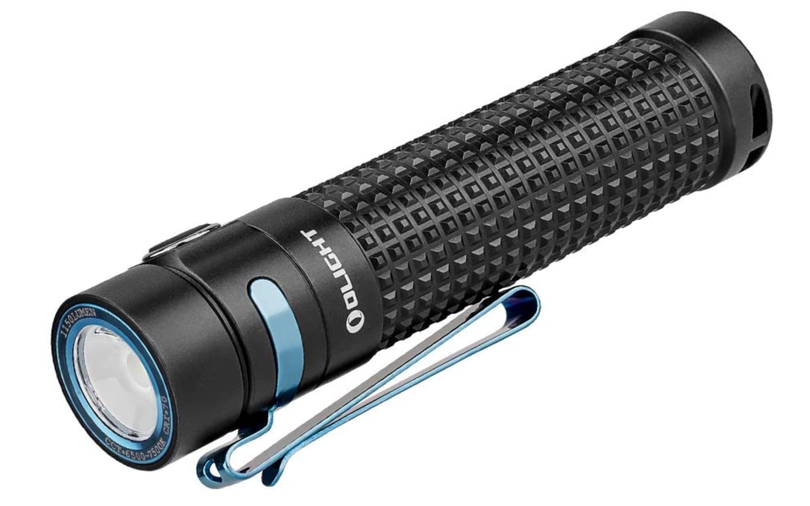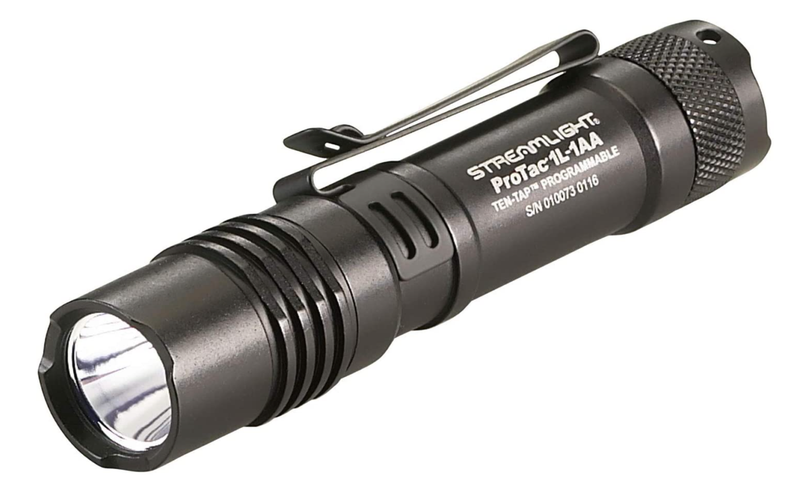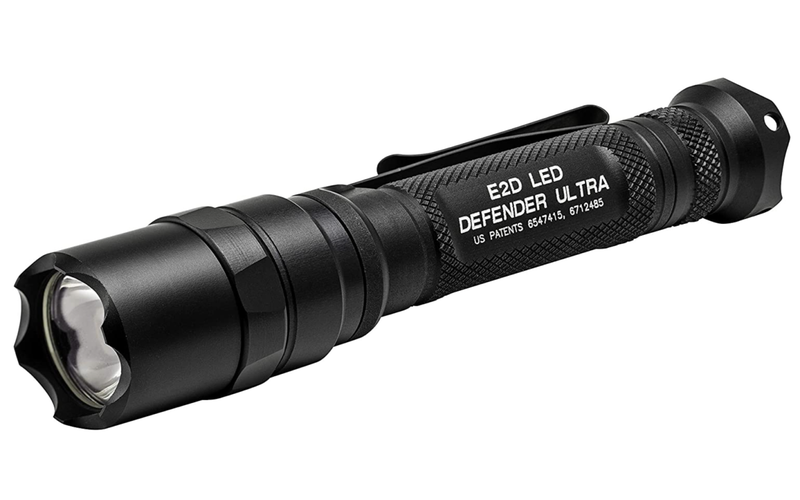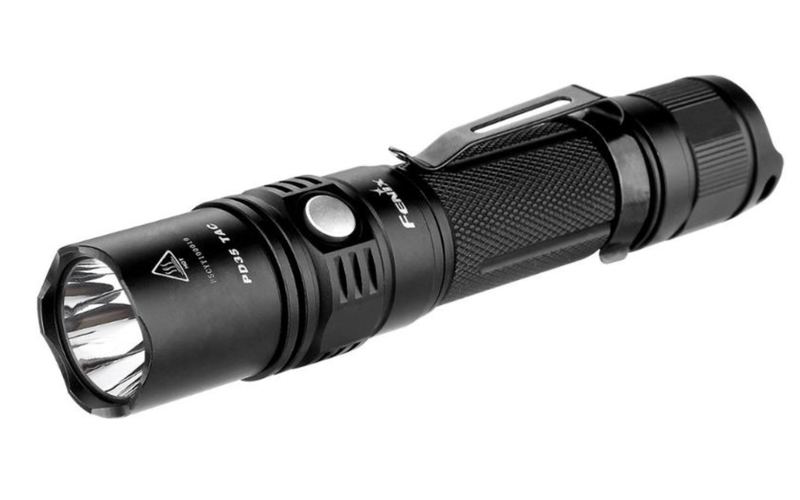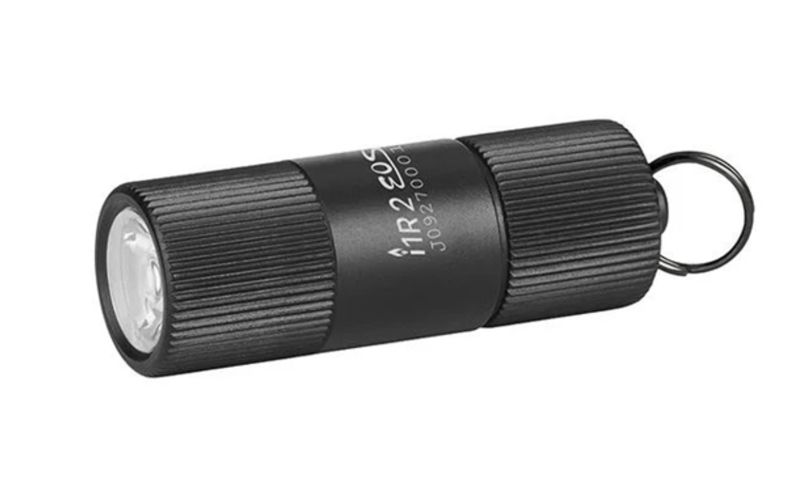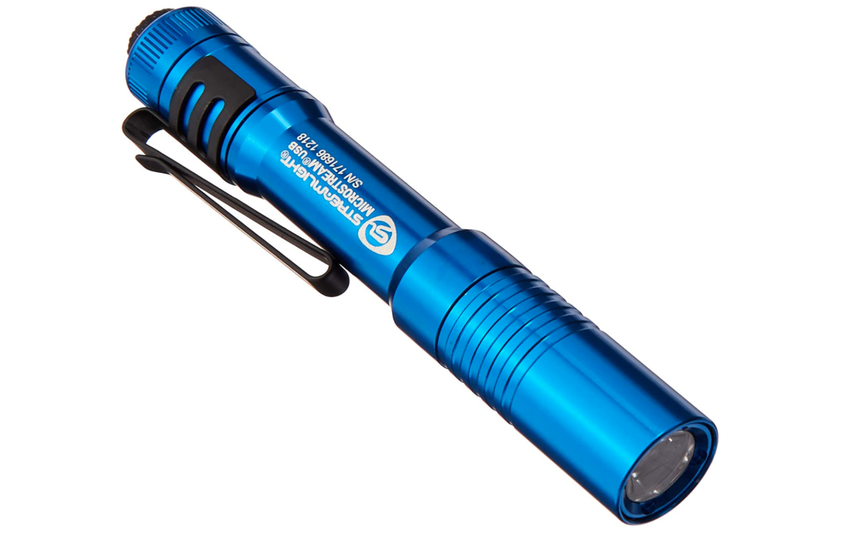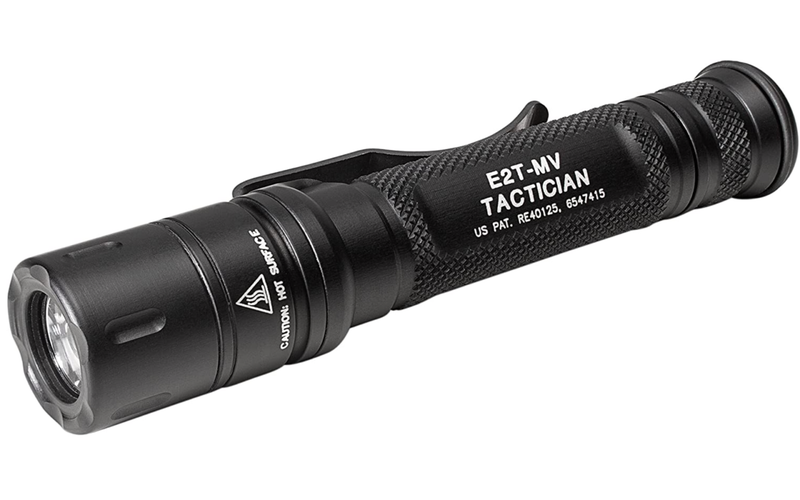We may earn revenue from the products available on this page and participate in affiliate programs.
How many times have you found yourself wishing you had skipped that cheap EDC flashlight your buddy brags about every time you visit the PX? Sure, you saved some cash, but looking back now, you should have known better than to listen to a desk jockey talking up his first EDC light. Anyone can see something cool, buy it, and swear by it, but EDC gear needs to be tough and reliable. When it comes to choosing potentially life-saving gear, never compromise. You would never trust your life to a parachute rigged by someone without the red hat, so why would you trust a light with a name without a solid reputation? Sure, you might get lucky once, but when the chips are down, why gamble again?
To that end, we’ve rounded up some of the best EDC flashlights on the market. Take a gander and see which one is right for you.
- Best Overall: Olight S2R II
- Best Value: Streamlight ProTac 1L-1AA
- Best Premium: SureFire E2D Defender Ultra
- Best Rechargeable: Fenix PD35 V2.0
- Best for Keychains: Olight i1R 2 EOS
- Best Mini: Streamlight MicroStream
- Best Tactical: SureFire E2T-MV Tactician
The Olight S2R II proves that the perfect EDC flashlight combination of performance, durability, convenience, and affordability does exist in the real world. In turbo mode, this light produces a whopping 1150 lumens from a single LED bulb, boasts a far-reaching 135-meter throw (range), and generates a beam intensity of 4600 candela. It consists of Type III hard anodized 6061-T6 aluminum, one of the military’s favorite materials. It also possesses a top-tier IPX8 rating (water-resistant down to two meters for 30 minutes) and can withstand 1.5-meter drops; that may not be enough to survive a HALO jump, but it is still plenty tough for EDC use. The MCC II USB charging system keeps this thing powered up, while the three-color power level indicator light lets you know when it needs a charge. This light also includes five output levels plus a strobe setting, a square-milled grip texture, minimal weight, two reversible carry clips, and a magnetic tail.
Of all the tactical lights on the market, the Streamlight ProTac 1L-1AA may just be our favorite. This three-mode light (high, low, and strobe) is an excellent, budget-friendly tactical tool that accepts both AA batteries (alkaline of lithium) and CR123A batteries. With a single CR123A, this light generates 350 lumens at 6400 candela with a 160-meter throw, whereas AA batteries limit output to only 150 lumens. Streamlight’s LED Solid State Power Regulation provides maximum output throughout the chosen battery’s life, and three flanges protect the tailcap switch from accidental activation. This IPX7 pocket torch consists of tough, lightweight aluminum, weighs only 2.5 ounces, and measures 4.25 inches long and 0.95 inches across which, alongside the reversible pocket clip, makes this EDC light easy to store and deploy at a moment’s notice. To round things out, this light uses Streamlight’s Ten Tap programming system to give you ultimate control over how you plan to use it.
In the world of weapons lights and EDC flashlights, SureFire dominates the crowd, and even a basic overview of the SureFire E2D Defender Ultra reveals why. This hard-anodized aluminum light features a TIR lens, creating a smooth, symmetrical beam designed to maximize peripheral vision with an efficient use of energy, and both the lens and LED bulb are protected by a tempered, impact-resistant window. The tailcap click switch allows you to easily transition between high and low modes while also allowing for a clickless, momentary-on high option. The crenellated tailcap also employs SureFire’s twisting lockout tailcap to prevent accidental activation. On high, this light puts out an impressive 1000 lumens; on low, it generates a very practical five lumens instead. The head features a crenellated strike bezel, making this a true self-defense option should things go sideways, and the reversible pocket clip makes for quick deployments from convenient locations.
Another 1000-lumen light worth the money is the Fenix PD35 V2.0. This upgraded version of the original PD35 accepts either dual CR123As or the included micro USB-rechargeable lithium-ion battery. It also features a CREE XP-L HI V3 LED with a 273-yard throw and a peak intensity of 15,600 candela, enough power to illuminate a Black Hawk landing zone. In addition to the blinding turbo mode, this light uses five additional settings: high (350 lumens), mid (150 lumens), low (50 lumens), eco (three lumens), and strobe (1000 lumens). While the tailcap switch activates the light’s temporary and constant power modes, the output modes can be selected via the stainless steel side switch and handy battery charge indicator light. The light’s slim profile, low weight, and reversible pocket clip make it a breeze for EDC, and the IP68 rating ensures it can handle virtually any kind of abuse.
Some of us spend more time at the gym or on the athletics field than anywhere else, so an EDC flashlight like the Olight i1R 2 EOS can simplify life tremendously. This keyring-mounted torch measures just under 1.75 inches long and only 0.58-inch across. While not a defensive light per se, this flashlight still puts out a solid 150 lumens with a maximum throw of 40 meters, which is not bad for such a compact tool. To activate the light, simply rotate the bezel from off to low, then from low to high. On low, the light generates a short-range, five-lumen output that is immensely practical in daily life, yet the IPX8 rating ensures it can survive a downpour or an accidental dip in the pool. While the light has a short runtime, the lithium-ion battery recharges via micro-USB, making it easy to top it off on the road, at the house, or in the barracks.
While plenty of people may use a good penlight, the Streamlight MicroStream USB proves that not all penlights are created equal. This anodized aluminum flashlight measures 3.87 inches long and weighs a feather-light 1.2 ounces, making it more of a mini penlight than a full-fledged member of the Stylus Spoofers Club. That said, it still sets the standard for what a penlight should be able to accomplish with its rechargeable lithium-ion battery and dual output modes. On high, this light lasts for 1.5 hours at 250 lumens and 1150 candela and can reach out past the 65-meter mark, while on low, it generates 50 lumens for up to 3.5 hours on a single charge. To recharge, simply slide back the sleeve, and insert the included micro-USB charger. The tailcap switch is easy to use, and the pocket clip secures it to just about any location you can imagine.
The SureFire E2T-MV Tactician is an excellent choice for both tacticool and gray man EDCers. The MaxVision reflector casts a strong, intense beam across a wide area, perfect for self-defense scenarios that may or may not require a defensive firearm. The 800-lumen output creates a literal wall of light with a beam intensity maxing out at 3200 candelas and is designed to blind any threat while simultaneously maximizing your situational awareness. The tailcap switch makes activation second nature, and twisting the bezel a quarter turn allows you to switch from High to the five-lumen Low setting for admin tasks. The anodized aluminum body and electrical components boast an IPX7 rating, and the dual CR123A batteries provide a runtime between 1.5 and 95 hours, depending on the chosen mode. All in all, it is really easy to see why this light earned the name “Tactician.”
Types of EDC flashlights
- Tactical light: The most common EDC flashlight is the tactical light. Much like ink serves an octopus, these defensive lights produce a blinding light that gives users an opportunity to escape from a threat without needlessly escalating a situation. Beyond their impressive lumen output, these lights often include bezels with protrusions designed to give them a little extra bite in worst-case scenarios. Due to the beating they may be required to endure, these lights are virtually always constructed with aluminum, thanks to its solid balance between its strength and light weight.
- Penlight: Like defensive EDC lights, penlights are designed for easy everyday carry, but often, they have a significantly lower output than their more aggressive brothers. Instead, these lights are intended for administrative and other professional tasks, such as pipe inspections. As the name suggests, these lights have a size and style similar to large pens. Good quality penlights are made with durable plastic, although aluminum versions do exist as well.
- Keychain light: As the name implies, these lights attach to your keys rather than clipping onto some pocket. Usually, these flashlights are supplemental EDC lights designed for finding locks in the dark or digging through a handbag. As such, they prevent self-defense lights from being pressed into service on a daily basis, leaving them free to focus on their intended mission.
Key features of EDC flashlights
- Brightness: EDC flashlight brightness may be the most critical feature to consider. Modern manufacturers list brightness ratings in lumens in order to shed some light on a particular unit’s output. Most serious tactical EDC flashlights will produce at least 250 lumens on their highest setting. Of course, higher output levels often kill batteries in under five minutes, but you can be sure your hand will feel the heat long before that happens.
- Power source: An EDC flashlight can receive power from three different battery types, each with their own pros and cons. Standard alkaline batteries, such as AAs or AAAs, are cheap, but they usually lack the power necessary for high-lumen outputs. Specialized batteries, such as the common CR123A, perform better than alkalines due to their size-to-output ratio which allows lights to reach full output levels. Also, consider using rechargeable batteries, many of which use convenient USB chargers.
- Environmental resistance: Take a close look at an EDC flashlight’s resistance to environmental factors, particularly water. Using standardized tests created by the International Electrotechnical Commission, an IP rating makes at-a-glance environmental resistance evaluation a breeze. A light with an IPX7 rating is water-resistant for up to 30 minutes at a maximum depth of one meter, whereas an IP67 rating indicates the same level of water resistance with complete protection against dust ingress. Higher numbers indicate better protection.
- Durability: EDC flashlights take a pounding each and every day, so finding one designed to last must be a top priority for any serious carrier. A durable body, impact resistance, and the ability to resist the elements are part of what set apart quality products from the snazzy lookalikes commonly found on today’s market.
- Deployment method: An EDC flashlight that is quick and easy to deploy is a light that you will actually use. First, when considering a tactical light, see whether or not the light in question has a tailcap switch, at least for the high output mode. Second, investigate how the light is stored when not in use. Most lights will include one of two pocket clip designs: a fixed, one-way clip and a removable, reversible clip.
Benefits of EDC flashlights
The prepared individual understands the value of a reliable light made to the highest standards of quality, durability, and performance. A quality light is a convenient tool for odd tasks, such as looking for a dropped set of keys, and some may use their daily carry flashlights for menial admin or inspection tasks in a professional context. Of course, EDC practitioners need a light that can do these tasks and more, since many of us rely on our tools for an added layer of security. Sure, situational awareness increases overall personal safety, but as anyone who has been deployed (and plenty who have not) knows, even hypervigilance cannot be a cloak of invisibility. A proper EDC flashlight provides a secondary level of safety and security by serving as an extremely capable less-lethal self-defense tool, creating a literal wall of light that allows the user to disappear at a moment’s notice.
EDC flashlight pricing
When it comes to picking at a quality EDC flashlight, be willing to drop a little extra cash. As a general rule, flashlights under $50 fall into one of two categories: trash or gimmick. Plenty of off-brand lights exist here, although some known names make budget-friendly keychain or other backup lights. The one exception to this rule seems to be Streamlight, which makes a few good quality lights that perform and last well while managing to include a number of desirable features. Of course, most people will find themselves dropping somewhere between $50 and $100 for a durable, reliable, and well-engineered EDC light. These lights offer high lumen outputs, excellent durability, and a number of other unique features, including more than a few with USB rechargeable batteries. EDC lights that top $100 tend to be fewer, but strong quality comes with the price tag, which is not surprising since many of these lights bear the SureFire nameplate.
How we chose our top picks
When reviewing new gear, we much prefer to go the hands-on route, but sometimes, a lack of resources may thwart our attempts to get our mitts on some cool gear. When that happens, we listen to those who have firsthand experience. We comb through online reviews on Amazon, enthusiast blogs, professional publications, and more to bring you the best, most comprehensive information we can. We sift through it all, keeping the gold and tossing the rest. For this review on EDC flashlights, we relied on our hands-on experience with the Streamlight ProTac 1L-1AA and other flashlights.
